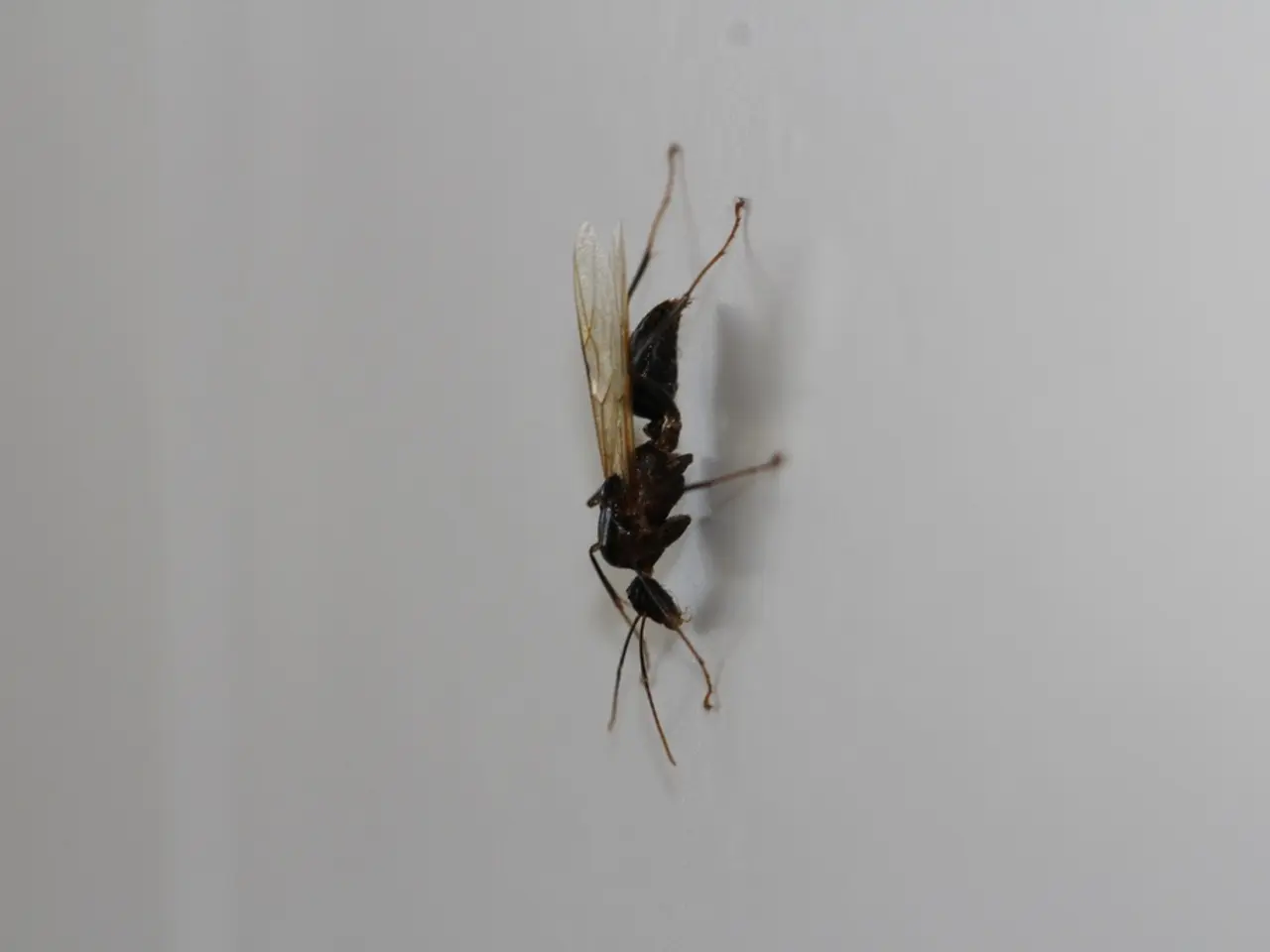Inquiry Regarding Giant Asian Hornets: 5 Insights on Their Presence in North America
In a recent article republished from The Conversation, Akito Y Kawahara, Associate Professor and Curator of Insects at the Florida Museum of Natural History, University of Florida, sheds light on the Asian giant hornet, a formidable insect that could pose a threat to honeybees and other pollinators in the Pacific Northwest.
The Asian giant hornet, also known as the Vespa mandarinia, is easily identifiable. It measures 2 inches (5 cm) long or more, with a 3-inch (7.6 cm) wingspan, and boasts an orange head and a broad striped orange and black-banded abdomen. This is significantly larger than typical North American hornets.
While these hornets are not always harmful to crops, they are considered beneficial in parts of Japan for removing pests. However, in North America, they could potentially disrupt the delicate balance of ecosystems, particularly affecting honeybees.
Japanese honeybees have an interesting defence mechanism against the Asian giant hornet. When threatened, they can raise their body temperature to 122 degrees F (50 degrees C), a move that is lethal to the hornet.
It is essential to verify identifications, and for this purpose, photos are crucial. They can also be uploaded to iNaturalist for research purposes. If you spot a giant hornet in Washington state, do not attempt to remove nests yourself or spray them with pesticides. Instead, take a photo from a distance and report it to the Washington State Department of Agriculture.
Entomologist Akito Y. Kawahara cautions that Asian giant honeybees have not established populations in North America yet, but they pose a potential invasive threat due to climate change and global trade.
The original article can be found on The Conversation's website, offering readers a deeper understanding of this intriguing insect and the potential impact it could have on our ecosystems. Furthermore, the article also highlights the use of Asian giant hornets in some Japanese food and strong liquors, and their believed medicinal benefits.
In conclusion, while the Asian giant hornet may have its uses in certain contexts, its potential impact on North American pollinators is a cause for concern. Awareness and responsible reporting of sightings are crucial in mitigating any potential threats.
Read also:
- Mourning a Mother's Death: Strategies for Daughters to Find Comfort
- Distinguishing between a cold and allergies is crucial for providing relief to your children's respiratory issues
- Carpometacarpal joint osteoarthritis: Characteristics, origins, remedies
- Doctors Specializing in Genetics and Their Part in Preventive Healthcare








